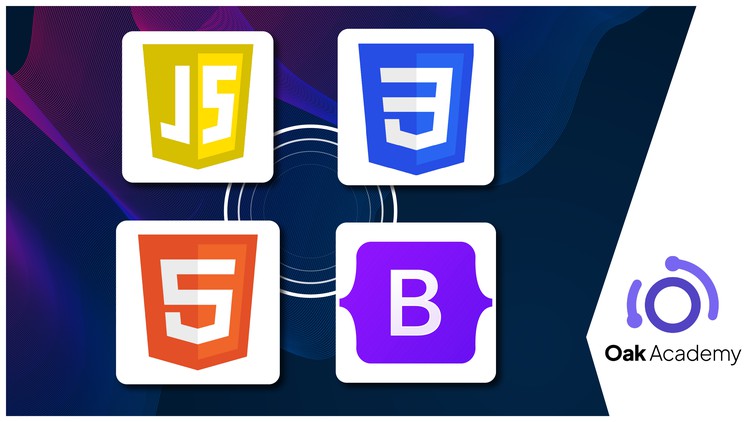Full Stack Web Development with React,React Native,Bootstrap
Full Stack Developer skills. HTML CSS Javascript, Bootstrap, React JS, React Native to Learn Full Stack Web Development
4.74 (51 reviews)

398
students
28 hours
content
Apr 2025
last update
$79.99
regular price
What you will learn
You will be able to create commonly used user login and registration pages by learning the form structure.
In the developing world, we will talk about all the details about web design compatible with different screens.
You will be able to prepare lists in different formats
Learn to use the latest HTML5 and CSS3 to add unique styling to Bootstrap
Learn Bootstrap 4 and UIs from scratch
Set up our virtual environment for javascript, react, bootstrap, html and css
Install React-Native dependencies for MAC and Windows
How to include JS File in HTML
What is conditional statements (if else, switch case, ternary operator), how to use
What is loops (for loops, while loops, continue and break statements), how to use them
How to write Functions, what are the differences between Function Decleration and Function Expression
How to create Arrays, Array methods (push, pop, shift, unshift ...), Array iteration
Learn and create amazing high quality Bootstrap 4 themes and UIs from scratch
Learn to compile Sass in the easiest way possible using a GUI
Get a crash course of the Bootstrap Grid System with the theme layout
We will improve our knowledge step by step by learning the basics of CSS
Create a beautiful, responsive landing page for any one
CSS or Cascading Style Sheets is a style sheet language used to style markup language.
HTML is a formatting language, not a programming language. Javascript is often necessary to make HTML “dynamic.
JavaScript is one of the most ubiquitous programming languages on the planet, mostly because it's the backbone of interactive web applications
JavaScript is a curly-braced, dynamically typed, prototype-based, object-oriented programming language.
Web development is a broad description of the tasks and technologies that go into creating a website.
Some web developers will obtain a degree or certification in the field.
Some web developers will obtain a degree or certification in the field.
Each aspect of creating websites and applications entails a unique set of skills.
Web development is a broad description of the tasks and technologies that go into creating a website.
JavaScript is one of the most ubiquitous programming languages on the planet, mostly because it's the backbone of interactive web applications.
JavaScript is a curly-braced, dynamically typed, prototype-based, object-oriented programming language
JavaScript is the programming language that allows users to interact with the websites that they're visiting making it very important language for web developer
JavaScript is a text-based programming language used for client- and server-side development.
Choosing the best JavaScript framework for your web project depends on what you are looking for.
HTML, or hypertext markup language, is computer code used to create web pages and emails. Web developers, email marketers, web writers, and many others use HTML
HTML is a formatting language, not a programming language. Javascript is often necessary to make HTML “dynamic.
HTML is not considered a programming language but rather a markup or formatting language.
Bootstrap is a free frontend web development framework for creating responsive websites.
Google Flutter offers developers a UI toolkit that has some similarities to React Native.
Learning Nodejs is a great way to get into backend web development, or expand your fullstack development practice
React is an essential Javascript framework for web development. It is the most popular framework for developing web, mobile, and desktop app user interfaces.
React is a front-end library in Javascript that was developed by Facebook.
React, or React JS, is a front-end Javascript library for building UI components for the web.
There are many reasons why React is popular. One reason is that Facebook developed it.
Screenshots




3643018
udemy ID
11/18/2020
course created date
11/21/2020
course indexed date
Bot
course submited by